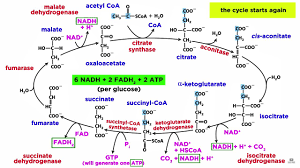
Energy Systems 101: simplified for you b/c you’re a busy guy/gal!
Doing physical work, especially exercise, requires energy! Nothing new there. But the ability to Produce and Use this energy via your cardiovascular and (neuro) muscular systems are the trainable windows in exercise, and this is what you are doing whether you know it or not when you go out for a jog or lift weights. You are training your systems to produce energy either Fast (“rate of energy production”) for muscular work, or for a longer Duration (“capacity”). So we work out to produce energy, whose speed-of-energy needs are dependent on the activity at hand; rate has more or less to do with how FAST we need it, like having to sprint to your bus, and capacity is more dependent on if the activity is repeated over and over, like a basketball game, or just going for a long jog.
 All our Energy System Engines at work…
All our Energy System Engines at work…
Our body’s energy currency is something called ATP. Not going to delve deep into it, but I’ll give you a primer and explain why you need to know this, even if you just work out occasionally.

Your muscles store and create ATP (the energy!). We all have about 10 seconds worth inside our muscles before it runs out. That was God’s gift to us, and I am grateful.
After this energy runs out, the concept of “Energy Systems” comes into play. This is just how your body can continue creating that energy currency and maintaining whatever physical thing you are doing at that moment, be it typing on a computer, or actually working out. We have 3 main engines to produce and use energy, and hopefully after you read this, you have an understanding of which engine(s) you are training when you exercise.
Engine 1: Aerobic Engine
This engine powers your muscles for hours on end, or anything over about 60 seconds. It must have a constant supply of Oxygen. This is why traditional low intensity Aerobic work can occasionally look lame or boring—because your Oxygen intake via breathing is the main player here! What’s not very well understood is that even high-intensity intervals or heavy deadlifts, where you are out of breathe, are Aerobic when doing repeated bouts, because it’s your Aerobic system that is used to replenish the ATP (energy) for your next set of sprints or deadlifts in between those sets. So yeah, your Aerobic engine comes into play even during non-Aerobic based weight-lifting workouts! So stop saying you “don’t do cardio” man! You do, and need to embrace it! I can go all day and write about why weight lifters need cardio to lift MORE weight, but I digress…. Instead, just read this.
So in turn, this system is always running. You’d be dead if it wasn’t, and chemically speaking, it is EPIC in terms of how many steps are involved. Check this picture out: this is the Krebs Cycle you learned in Biology class, one of the 2 Aerobic engine methods to create ATP; the other is called the Electron Transport Chain, and it’s even more bonkers; won’t even go there today!
 Crazy, I know.
Crazy, I know.
This type of training has tons of variety that can be used. Intensity can be anywhere from 0-10 on the Rate of Perceived Exertion scale (RPE for short), depending on how you are designing your workout. Walking is Aerobic, obviously, but so are those repeated bouts of high-intensity work like sprints or bootcamps. What matters, again, is how much energy is needed quickly, and how long you need that energy to last at that intensity. When designing your Aerobic workouts, take that into account!
*Something I notice in exercise is that people, for the most part, train the Capacity side way more than they should, and do so in asinine fashion. Take running as an example: if you could only run at, say, 6.0 on a treadmill for 3 miles, then training “capacity” would have you train at that speed for longer and longer bouts, which is most do when they jog. They teach their bodies to run at that speed for 4, 5, 6 miles, etc. But if you wanted to ever run FASTER, then you need to also throw some RATE of Energy Production workouts in there. Yes, that means running faster, and at the beginning of a “Rate” program, definitely shorter bouts, since it’s your baseline. But In time, your 3 mile jog at 6.0 can become a 3 mile jog at 8.0, but only if you throw those higher speeds in eventually!
The other way people botch this is they don’t recover enough to repeat their next set at the SAME speed. These are your over-used Suicide Sprints, Metcon’s, etc. Yes, they do have a place in a training program, but do you think running SLOWER each successive set will make you run FASTER and LONGER at that speed?
Exactly. Anyway….enough with my rant.
Engine 2: Anaerobic Lactate
This “no-Oxygen-needed” engine goes by many names, such as the Lactic Acid system, or Glycolysis, to name a few, but don’t get too caught up in this; the research still has no idea what things like “lactic acid” are anyway. Some say it doesn’t exist, and the burn you feel during intense exercise is nothing more than hydrogen ions. Others, like Performance Architect Joel Jamieson of 8weeksout.com, say Lactate is an actual energy source that allows you to continue exercise, albeit in a much more uncomfortable and fatigued state; I’m more a buyer of this philosophy.
What’s important to understand is that it requires less chemical steps since no Oxygen is needed, but it runs out quickly! This type of training is usually like an “8-9” on the RPE scale—intense and much shorter bouts of exercise than pure Aerobic work, with varying rest periods depending on if the focus of the workout is to enhance RATE (long rest periods) or CAPACITY (torture workouts like some Crossfit workouts or Suicide Sprints).
*Most weight lifting falls into this. In terms of weight lifting, enhancing RATE would be your heavy lifts or your high powered Power lifts, using long rests, while trying to get more swole and jacked vi Bodybuilding would be those longer, burning, higher-rep lifts, which enhance Capacity since the sets are of longer Duration. (Btw, When doing “conditioning” circuits using sprints, for example, which most won’t consider “weight lifting”, the energy needs are similar. The only difference is the mechanical tension and localized muscular fatigue.)
Why does this energy run out so quickly?
Because creating ATP this way is highly disturbing to our cellular environment!. Don’t believe me? Try sprinting for 2 minutes at the same speed, and tell me how it went, or if you could maintain your speed; or try doing 10 sets of squats, and let me know how you feel the next day.
This window is trainable, but not as trainable as your Aerobic engine, namely because of this high inflammatory response to our bodies! I can’t tell you how many people over-train this system. It requires more and more stimulus (stress/load/intensity) to make further fitness improvements, and you can only push that so far before hitting a wall or injuring yourself. Besides that, it can be mentally crushing day in and day out, especially when performing something like conditioning (Cardio) in an Anaerobic fashion using exercises that CAN’T last more than 30-60 seconds because of their high intensity.
 That’s no way to live everyday man! Go for a bike ride tomorrow please!
That’s no way to live everyday man! Go for a bike ride tomorrow please!
This system is also not required for life like the Aerobic energy system—as long as you don’t need a lot of energy fast, such as doing a sprint or picking up something heavy. Theoretically, though, you could get by just chilling 24/7 and eating healthy; the Okinawan’s have the highest life expectancy in the world, and many just chill all day (but eat healthy).

Engine 3: Anaerobic aLactic
This other “no-Oxygen-needed” system is powered by Creatine Phosphate. Yes, your body makes its own Creatine, that stuff you see in Vitamin Shoppe, just not that much. And it runs out in like 5-10 seconds. But this engine allows you to do something beastly, like this:
 Creatine Phosphate at work…
Creatine Phosphate at work…
This type of training is like a 9-10 on the intensity scale and requires more rest to repeat at the same intensity. These are your maximum power jumps, throws, lifts, 20 yard dash, and the like.
It’s also the least trainable window out of the 3 engines. So don’t spend months on end training this engine!
*As an aside, creatine monohydrate from the Vitamin Shoppe very much works if you understand it: its extra energy–that’s it. It won’t make you jacked automatically as many people think, it just gives you extra energy to get more reps. If getting that extra rep is that important to you, go out and buy some….my ass can’t afford those luxuries these days….
Putting it All Together
With that said, when you choose to exercise, know what energy system(s) you are working, and understand the inflammatory implications and adaptations of each. If all you do is randomized exercise and don’t focus some time on developing them specifically, you won’t get too far. And like I always say, who has that time to waste!?
Here is a quick example to explain all of this:
You are walking to the bus, which requires a small ATP burn rate, which is 100% fueled via that crazy diagram at the beginning of this blog on the Krebs cycle; but if the bus is 2 minutes early, and I have to start quasi-sprinting to catch the bus, the ATP is in higher demand, and your Aerobic engine is too slow to make you run at that necessary speed, so it relies on your other Anaerobic engines.
If I’m running at 85% of my max speed for like 30-60 seconds or so, I’d be burning my stored carbohydrates via Glycolysis (Anaerobic Lactic system–Engine #2) to fuel my catch-the-bus run. But if I run too fast, and my ability to use oxygen exceeds my ability to create ATP at the RATE (i.e. speed of my run) necessary for Engine #2, then I’ll have to slow down and use my Aerobic engine again, which as you know is always working! So I slow down and catch my breath, and increase my oxygen supply, which in my current state of fitness would allow me to continue running, just not at that 85% speed. (more Capacity-developing workouts could change this, but I digress…)
So in short, intensity dictates what engine I’m using. At this point in our hypothetical example, I was running too fast to supply my muscles with the necessary ATP energy to maintain that speed, so I had to lower my intensity (speed) until I could in fact supply my muscles with energy. Again, training smart can change all of that and help me run faster and longer, but only if I train SMART.
Let’s keep the example going…
I then realize the parked bus didn’t see me and is about to leave without me, and I need to go into a balls-out 100% max sprint to catch it, which would be Engine #3 (Anaerobic aLactic Phosphate system); the rate of energy needed is the highest, and I’m going to use it now, because it will last about 5-10 seconds, and that’s all I need to catch this damn bus!! That’s why God created that last system…for emergencies!
*Btw, this example happens to me and dozens of others every single week on my bus to NYC. I wrote this piece with you guys in mind!
So I finally catch my bus. When I’m finally on the bus, looking like a sweaty maniac, it’s my Aerobic engine that will help me relax and get back to normal, because sitting on a seat is as low-energy needing as it gets. The better conditioned Aerobically I am, the faster this happens. Think about it: if you are completely out of shape, you will huff and puff longer—the better in shape you are Aerobically, the faster you recover and replenish your energy.
BTW, measuring how fast you can relax after huffing and puffing from exercise is a great way to measure Aerobic fitness—I go into that in my Cardio article.
Training
The cool thing is that I can train all 3 engines to work better. If I get both stronger, allowing my muscles/joints/tissues to become resilent, and use principled programming in my conditioning/Aerobic workouts, I can make what was once Anaerobic (high energy need) now Aerobic (lower energy need). That’s the goal of most sports or long-term fitness training—to make someone’s Anaerobic capacity their new Aerobic capacity; think about it–if I can make that quasi-sprint speed last longer via my Aerobic engine using constant Oxygen from my breathing, I can last at that speed longer, which means my speed that was needed and produced by Engine 3 is now produced by Engine 1! Same thing with lifting weights–if I can make my 1 rep max my new 10 rep max, I won’t need to rely on those short Anaerobic engines to lift that same weight! THAT is what most training should accomplish.
Any workout will focus on improving RATE or CAPACITY. How fast do you need Energy, which is trained via the highest intensities, with long rests, or how long do you need that energy for, which is trained using things like shorter work/rest ratios, high volume sets, and the like. They are both important, and should compliment each other. This is precisely why most people fail at exercise in the long term sense—they do randomized workouts that fail to develop either side of the equation–it’s too random and not focused! Yes, it’s better than nothing, but if you work out regularly, then you need more targeted stress, so use some principles and get your sh$t together!
Glad you now understand this! Those that develop both are the people that can do badass things, and do them for a long time. Great runners run FAST and for a long DURATION; they got “fast” from doing RATE of Energy workouts for a period of time (strength and power training, sprints, etc.) , and then turned that new speed into CAPACITY by using workouts that repeated that new speed in a variety of different Durations; like I said, they should complement each other.
Programming Basics
In terms of programming your weekly workouts, inflammation management is the key. Doing sprints is cool and fun, but the catch, as you now know, is that Engines 2 and 3 are highly inflammatory, and are not as trainable long term. This is huge if you plan on working out more than a couple days a week and for months on end. Consider trying to do your heaviest weight lifts or your high-intensity circuits every week for 12 months; you will hit a wall or likely get injured; that all just requires MORE energy to make MORE gains, and we only have so much. This is where variety comes in. I always espouse something called a “High/Low” model; after a hard, intense workout, try something less inflammatory the following day. This is where the “art” of training comes in- If I start getting achey, stop sleeping well, etc., then I know my workout dosage was too high. If my fitness improves (strength, capacity, etc.), AND I continue to feel good, then I’m on the right track, and can potentially up the dosage.
Sample Program
My 45-year-old beginner client wanted to improve his general fitness. So I used a Seasonal Training approach using these principles and did this:
Block 1: Basic Strength Training w/ Aerobic Focus
Because he was a beginner, I can throw a lot of randomness and variety at him, and he will improve. His body is sensitive to exercise, and doesn’t need excessive intensity (inflammation) to make gains. But as he advances, I’ll have to get more specific, as specificity requires targeted stress and more inflammation, and that is Energy expense as you know now!
With that said, we did 2 days a week of some basic high-rep lifting so he could learn the movements we will use later in his program, and programmed low-intensity Aerobic work (think 50-60% of max intensity) for 20+ Minutes, which progressed each week for 3-4 weeks. Because this Aerobic work was low intensity (i.e. low inflammation), we could do it as much as he wanted (increased frequency), so he did it 2 days, as well as on the days he lifted (RPE 8), since the lifting didn’t take as long during this Block.
Block 2: Strength and Hypertrophy Block
This is where we hit the iron more intensely, and maintained his Aerobic system’s fitness that we just achieved by “touching base” with light Aerobic work and/or shorter bouts of higher intensity aerobic work after the main lifting portion. The focus here was maximizing tension on his muscles and getting stronger/bigger/more resilient tissue, so Aerobic work took a short-term back seat (less time dedicated it, but not ignoring it completely). So about 80% Anaerobic-style weight lifting in the 5-12 rep range over multiple sets, and some “touching-base cardio” each week.
We did this for about 6 weeks.
Block 3: Conditioning
This is where we used his Aerobic baseline from Block 1, and included moves he learned and became stronger with in Block 2, into the same workouts. He wasn’t training for a particular sport, per say, so we made his “sport” his workouts! Let’s now see everything he worked for and put it into high density workouts where he does lots of intense work and watch how long he can keep it up without stopping, meaning let’s see how Aerobic this workout can be. If he is de-conditioned, he will need lots of rest, as it’s still too Anaerobic for him at those intensities.
The more moves you learn and master in strength training, the more you can use them Aerobically later on, like we did here. Training allows what was once hard (energy consuming) now easy (less energy consuming). We also created more high-intensity bouts of exercise using all 3 Energy Systems, which is basically “getting in shape”; we did this about 4 weeks. Variety and Randomness are more frequent in this block. Think of this as circuit training, combining various intensities using movements you are capable of. Something like Orange Theory or Crossfit would be good examples here. If you are smart, you will alternate your low intensity days with your high intensity days, and have some rest days in there, to keep your inflammation in check. Work with your schedule and pay attention to fitness markers and how you feel.
Finally we hit Reset, and started over. But now he has more strength and a better Aerobic engine from all of those weeks of training, so his baseline was higher. He is now more FIT! See how his strength complemented his Aerobic work?
On the other hand, he now will need even more Stress to make gains, and that’s why on his next Seasonal Block schedule, he will see higher intensities in his Aerobic work, and more weight in his Anaerobic resistance training block! The cool thing is he won’t even notice, because what is now low intensity USED TO BE his high intensity.
Cool heh?
See how you can focus your programming on certain things at certain times? See how periodized block training piggybacks on itself when you hit “reset” and start over? See how it’s more efficient to actually have some rhyme and reason in your exercise, rather than “just doing something”?
All 3 Energy Systems have trainable (adaptable) windows, but as you now know, the Aerobic engine has the most adaptable window, and should take up a hefty part of your training if your goal is general fitness and health. Throw in some strength training, and then what USED to be anaerobic might become so easy it’s now aerobic…..that, my friend, is cool….
To begin training virtually with Brian, get started at https://www.trainerize.me/profile/brianmahoney/Brian.Mahoney and schedule your complimentary consultation which can be done either via call or email.



